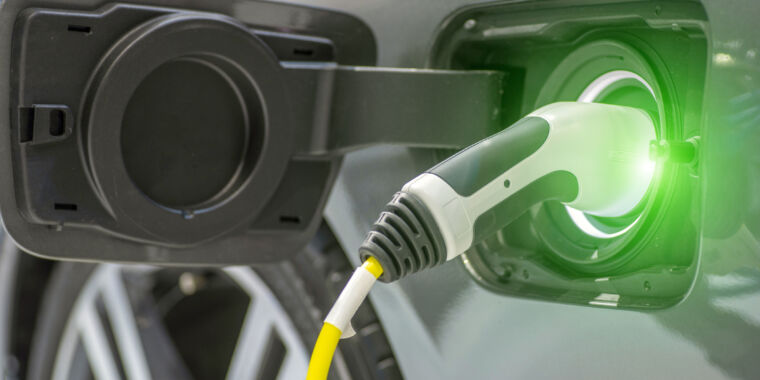Updating California’s grid for EVs may cost up to $20 billion


California’s electric grid, with its massive solar production and booming battery installations, is already on the cutting edge of the US’s energy transition. And it’s likely to stay there, as the state will require that all passenger vehicles be electric by 2035. Obviously, that will require a grid that’s able to send a lot more electrons down its wiring and a likely shift in the time of day that demand peaks.
Is the grid ready? And if not, how much will it cost to get it there? Two researchers at the University of California, Davis—Yanning Li and Alan Jenn—have determined that nearly two-thirds of its feeder lines don’t have the capacity that will likely be needed for car charging. Updating to handle the rising demand might set its utilities back as much as 40 percent of the existing grid’s capital cost.
The lithium state
Li and Jenn aren’t the first to look at how well existing grids can handle growing electric vehicle sales; other research has found various ways that different grids fall short. However, they have access to uniquely detailed data relevant to California’s ability to distribute electricity (they do not concern themselves with generation). They have information on every substation, feeder line, and transformer that delivers electrons to customers of the state’s three largest utilities, which collectively cover nearly 90 percent of the state’s population. In total, they know the capacity that can be delivered through over 1,600 substations and 5,000 feeders.
California has clear goals for its electric vehicles, and those are matched with usage based on the California statewide travel demand model, which accounts for both trips and the purpose of those trips. These are used to determine how much charging will need to be done, as well as where that charging will take place (home or a charging station). Details on that charging comes from the utilities, charging station providers, and data logs.
They also project which households will purchase EVs based on socioeconomic factors, scaled so that adoption matches the state’s goals.
Combined, all of this means that Li and Jenn can estimate where charging is taking place and how much electricity will be needed per charge. They can then compare that need to what the existing grid has the capacity to deliver.
It falls short, and things get worse very quickly. By 2025, only about 7 percent of the feeders will experience periods of overload. By 2030, that figure will grow to 27 percent, and by 2035—only about a decade away—about half of the feeders will be overloaded. Problems grow a bit more slowly after that, with two-thirds of the feeders overloaded by 2045, a decade after all cars sold in California will be EVs. At that point, total electrical demand will be close to twice the existing capacity.
Source link




